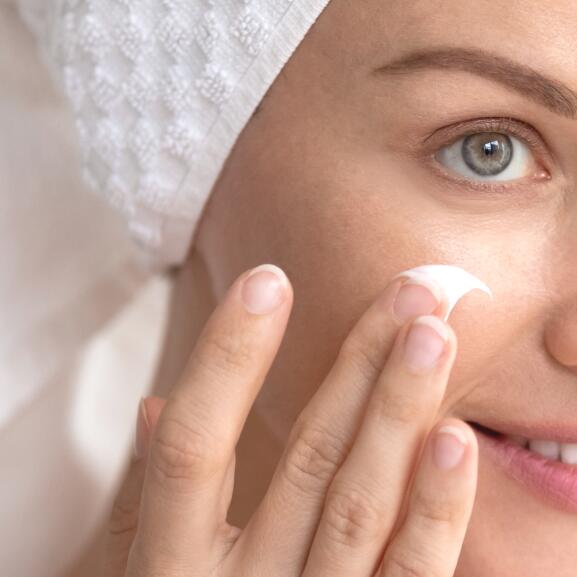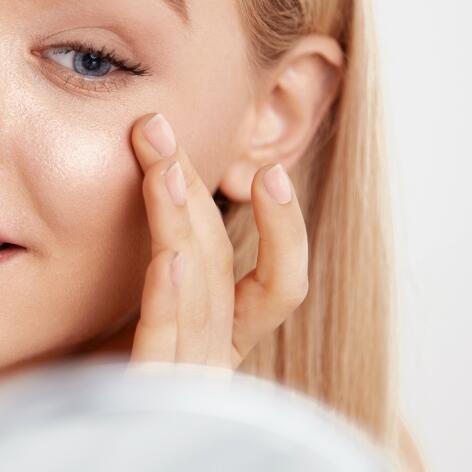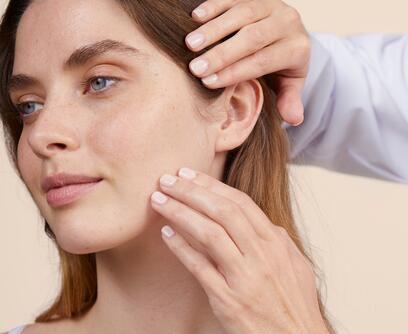Skin care routine for oily skin
Skin care routine for oily skin
Each skin type has its own care routine, and oily skin requires special attention. You need to cleanse, moisturise, purify, yes, but not just any old way. We can help you with the right products to balance your oily skin without stripping it or treating it too aggressively. Let's see how to start the virtuous circle of healthier (and more beautiful!) skin.

Identifying oily skin
First and foremost, identifying your skin type is essential to choosing the right products for your skin.
Oily skin can be recognised by its shiny appearance all over the face from the skin producing excess sebum. Your pores - the tiny holes through which sebum drains - will be dilated and very visible. Imperfections occur when the pores become clogged. If you wear make-up, your foundation will have trouble staying on all day and you need to touch up regularly. Finally, your scalp will also be affected, with your hair getting greasy easily.
If you recognise yourself in this description, you probably have oily skin.
"I'm told that oily skin ages better than dry skin, but in the meantime I can't stand the shiny appearance of my skin and my enlarged pores…"
Emilie, 29 years
What products should I use to clean my oily skin?
The ritual for oily skin begins with cleansing. Your priority is to purify and reduce excess sebum. There are several ways of achieving this.
Cleansing gel
Gel without alcohol or soap is the gentlest option to care for oily skin. The gel is used in the morning to remove the sebum secreted at night, and in the evening to remove sebum, make-up and impurities accumulated during the day. The cleansing gel is applied to wet skin and should be rinsed off. Finish with soothing and anti-irritating Thermal Spring Water to remove lime residue and chlorine from tap water, and soothe and soften the skin. To increase its effectiveness, spray the water onto the face and massage with your fingertips to remove any remaining impurities.
Micellar water
This captures sebum and impurities thanks to "micelles": tiny particles that attract fatty substances. A very gentle solution, micellar water removes make-up and cleanses morning and evening while respecting sensitive oily skin. Practical and fast, this double action product (make-up removal and cleansing) is applied with a cotton pad and doesn’t need to be rinsed. The perfect solution when you're feeling lazy about removing your make-up...
How to hydrate my oily skin
Just because your skin is oily, that doesn't mean it doesn't need hydration — quite the opposite! After cleansing in the morning, apply a light, non-greasy mattifying day cream to your oily skin to reduce excess oil and moisturise and protect it. This can be used as a base if you wear make-up, and of course you should use non-comedogenic make-up. In the evening, don't skip the make-up removal step with a cleansing gel or micellar water, and moisturise with an emulsion that's targeted for oily skin. You can also apply an anti-blemish treatment if needed.
All our make-up tips for oily skin

FRIENDLY (AND EXPERT) ADVICE
Your oily skin also needs to be deeply purified.
Cleansing and moisturising are part of the daily routine for oily skin care. To allow the skin to breathe and give it a glow, you can also apply a gentle exfoliating treatment or absorbent cleansing mask. This will “unclog” your pores by removing excess sebum, dead cells and impurities in-depth. But be careful: use these masks no more than once or twice a week, and always alongside products that aren’t aggressive and don't strip the skin. If the skin is treated too aggressively, it reacts by thickening and producing more sebum, which is exactly what we want to avoid.
Good habits to care for oily skin
Although it seems thicker and less fragile than dry skin, oily skin also needs softening. The key is to choose products that are targeted for this skin type and apply them gently. Use your fingertips to apply your cleanser, cream or exfoliator, and don't rub the skin if you use a cotton pad and micellar water.

Our solutions to take care of oily skin
Eau Thermale Avène products designed to help you feel better about your skin
NEWSLETTER
We’re always here for your skin!
All our tips for taking care of your skin day to day.

Which skin care routine should you adopt?
Identify what it really needs with the help of our experts and discover the most suitable skin care routine for you.
